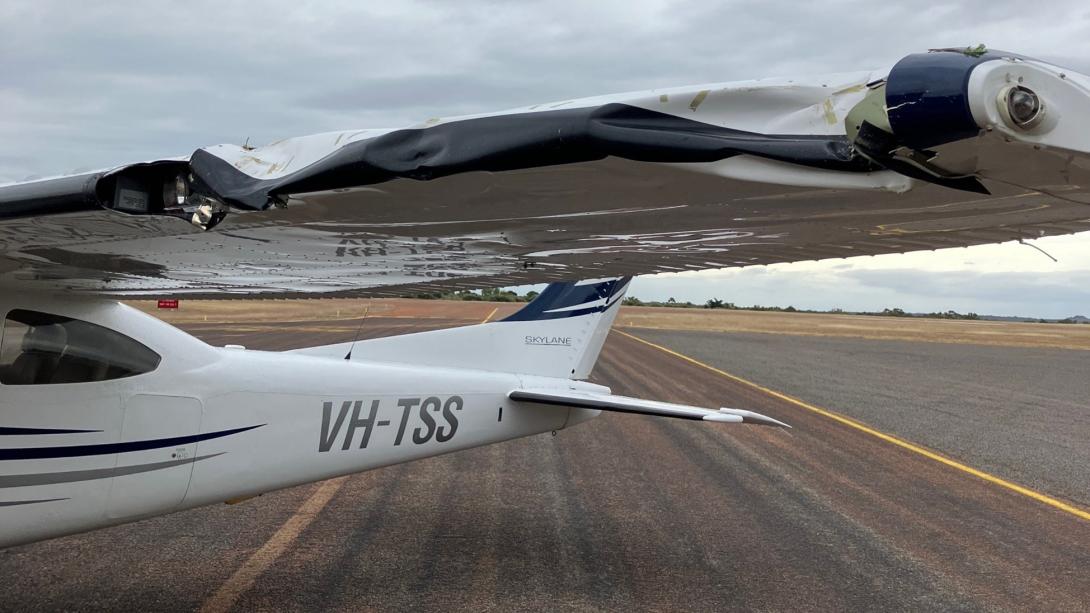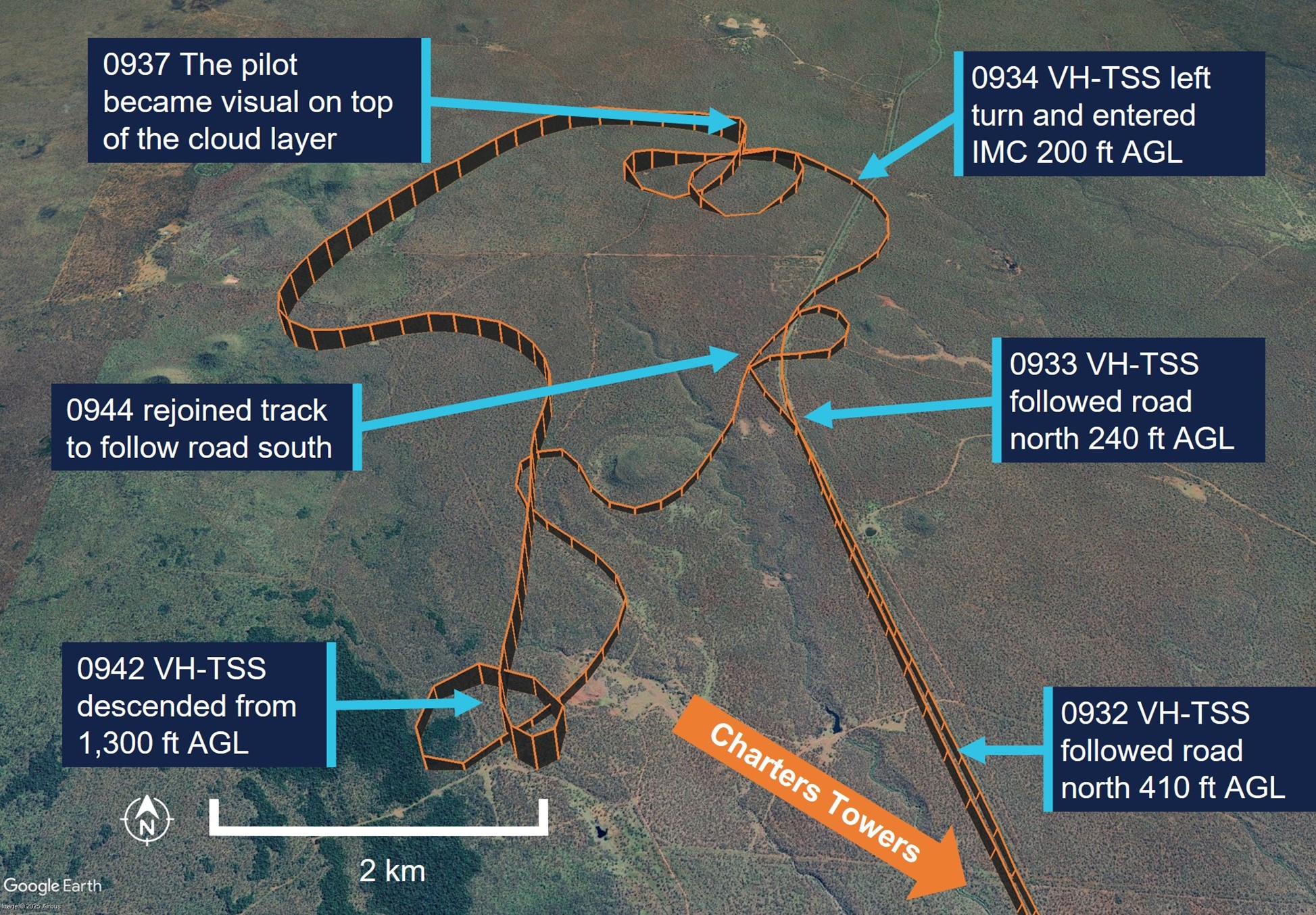
A Cessna 182 struck trees while recovering from a dive after inadvertently entering low cloud, an ATSB investigation report details.
The Cessna 182T was being used for a private flight under visual flight rules from Emerald to Atherton, west of Cairns in Far North Queensland, with a pilot and passenger on board, on the morning of 16 June 2025.
About two hours into the flight the pilot decided due to cloud and reduced visibility to divert to Mareeba which, while further away than Atherton, was at a lower elevation.
Over the next 35 minutes, the pilot made multiple heading and altitude adjustments to avoid weather and higher terrain.
Near Mt Surprise, the pilot began following a road, flying about 530 ft above ground level, due to a low cloud ceiling and their belief the road usually avoided areas of highest terrain.
“A few minutes later the pilot lost sight of the road and reported sudden ‘white-out’ conditions ahead,” ATSB Director of Transport Safety Dr Stuart Godley explained.
“Aiming to avoid the cloud, the pilot began to turn and reduced engine power, but the aircraft entered cloud while about 200 ft above ground level, and tracking towards rising terrain.”
Recorded data indicated the aircraft conducted a full 360° left turn with several changes in altitude, and came close to terrain, before the pilot engaged the autopilot.
“Using the autopilot, the pilot then commanded a 180° left turn in an attempt to exit cloud. But, as the aircraft climbed, its airspeed dropped and it likely stalled, leading it to rapidly descend in a dive.”
In response to a terrain proximity warning from the aircraft’s Garmin G1000 avionics system the pilot immediately applied stall recovery actions, applying right rudder and attempting to level the aircraft as it descended almost to ground level.
The pilot reported becoming momentarily visual and hearing the aircraft impact trees.
After pulling back on the control column and commencing a climb, the aircraft again entered cloud. However, using the aircraft instruments the pilot was able to maintain control and became visual again on top of the cloud layer and, with the aircraft substantially damaged, diverted to Charters Towers.

The aircraft was following a road before entering cloud.
Dr Godley said the investigation found that the pilot’s pre-flight planning was not adequate for the intended flight.
“During pre-flight planning the pilot obtained weather for the destination but not for the planned track,” he said.
“Had the pilot obtained the area forecast this likely would have influenced their decision to commence the flight, or to plan an alternate route.”
Citing the ATSB’s Aviation Occurrence Database, Dr Godley noted 108 occurrences where pilots flying under visual flight rules entered instrument meteorological conditions that were reported to the ATSB in the last 10 years. Of these, 14 resulted in accidents, causing 23 fatalities.
“Given the aircraft struck trees while exiting a dive, the pilot and passenger were incredibly fortunate to avoid a catastrophic outcome,” he said.
“It is the nature of flying under visual flight rules that pilots will not always be able to reach their planned destination.
“Making an early decision to land or divert and to resist the urge to ‘press on’ may prevent flight into marginal weather conditions and ultimately disaster.”
Read the final report: VFR into IMC and collision with trees involving Cessna 182T, VH-TSS, 57 km south-east of Mount Surprise, Queensland, on 16 June 2025


